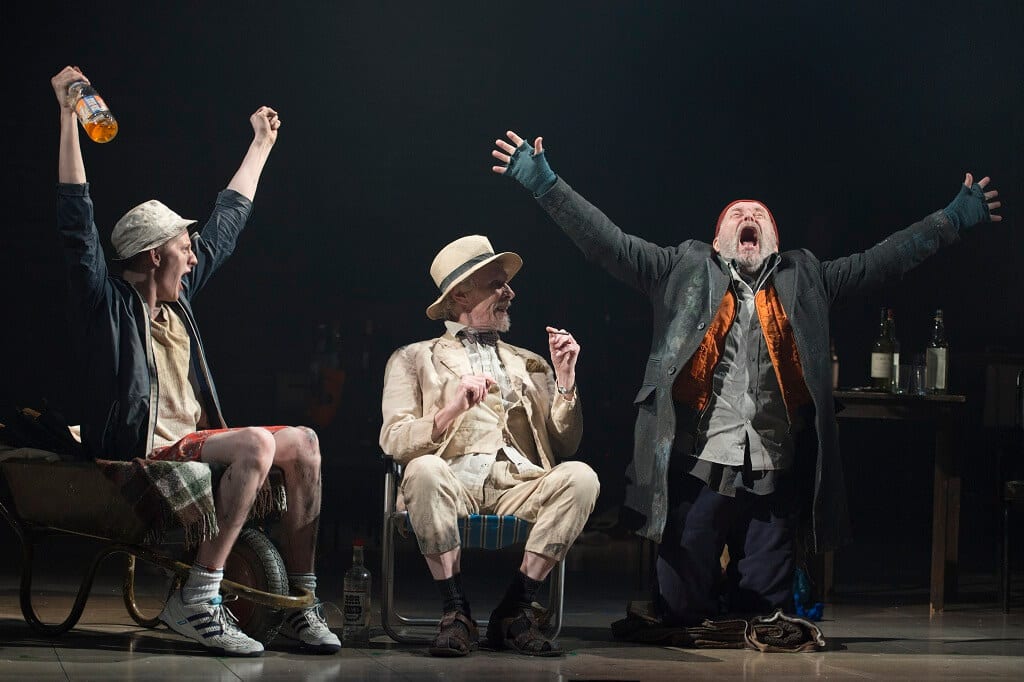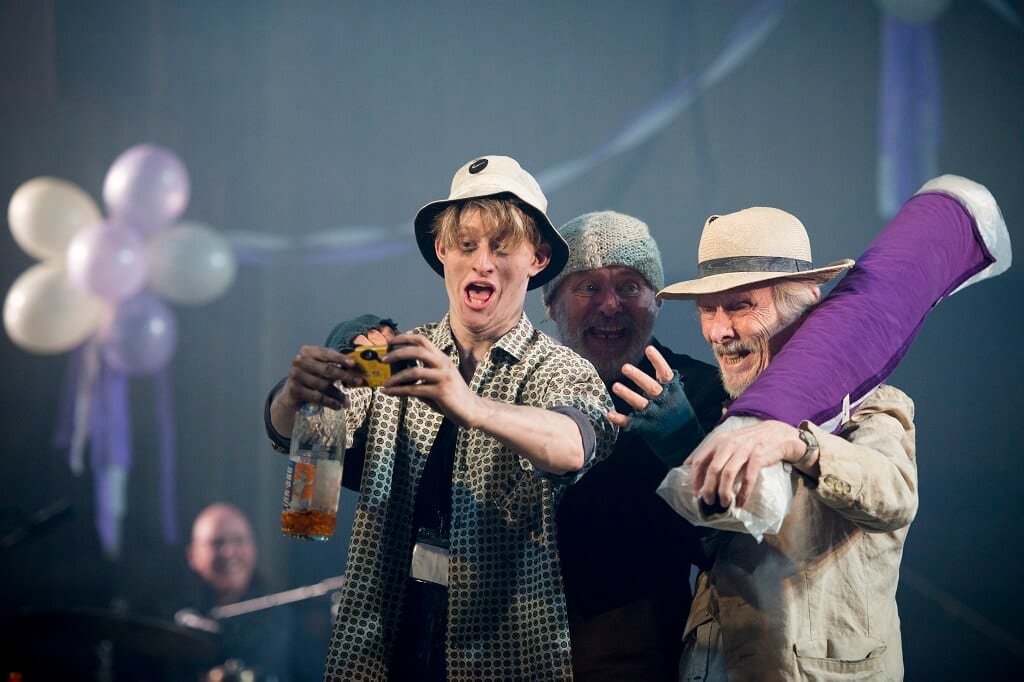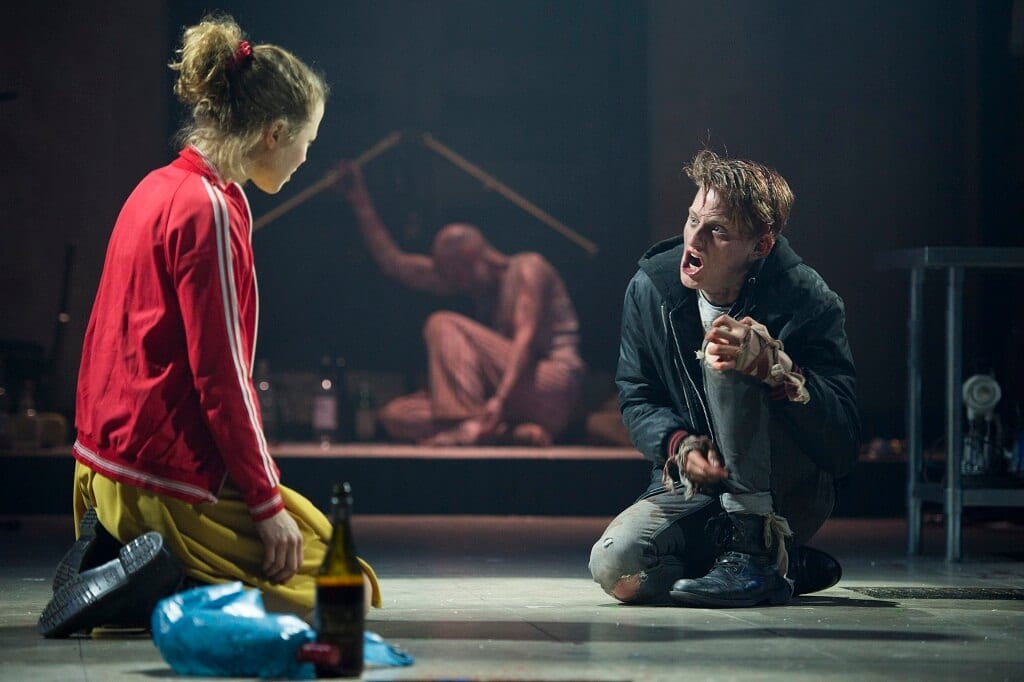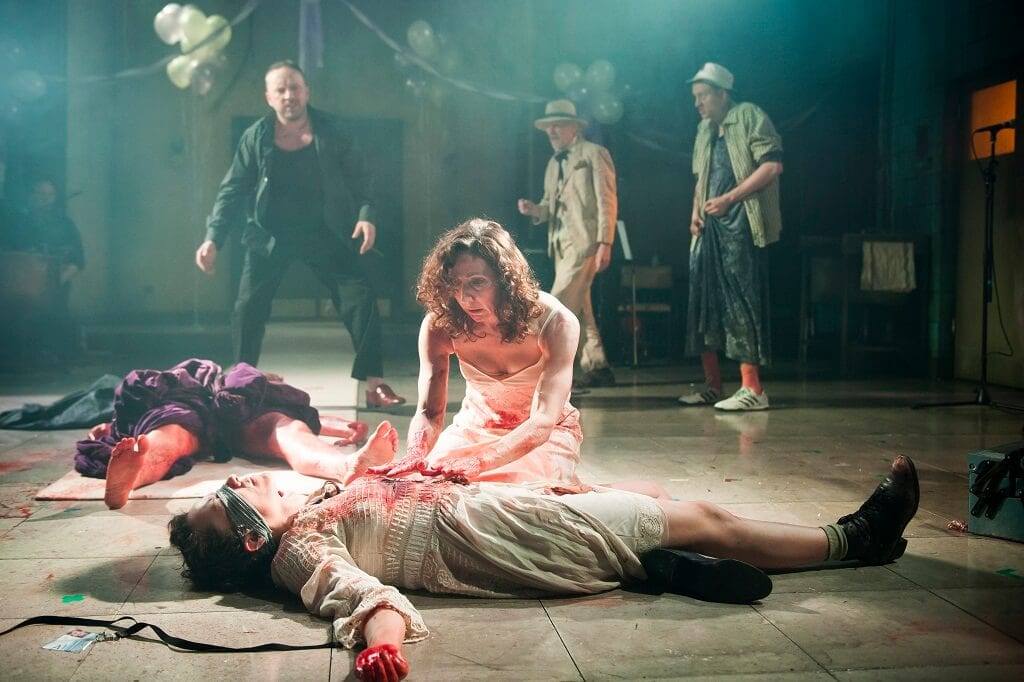This Restless House, Zinnie Harris’s retelling of Aeschylus’ Oresteia, is ‘not a tale for everyone’ – at least not one for weak stomachs, as we witness the mythic family’s struggle to expunge their hatred and grief of each other, one brutally graphic murder after another. This new collaboration between Harris and the Citizens’ artistic director Dominic Hill restores to the ancient Greek play its full tragic powers. Indeed, one of the paradoxes of This Restless House lies in its capacity to mingle moments of extreme tension with scenes of appeasement – a reminder of the cathartic power attributed to tragedies in antiquity.
The action is set in times looking like our present, and the place, according to Hill, possibly somewhere in the Balkans, accounting for the set’s resemblance with the décor of some movie by Emir Kusturica. The stage is covered in garbage and decorated with gaudy plastic balloons. In the ruins of Agamemnon’s palace, the Chorus, comprised of three dishevelled old men (Cliff Burnett, George Costigan and Lorn MacDonald), fills us in on the story of Iphigenia, whose sacrifice enabled the Greek army to set sail for the Trojan War. The trio keep a light mood – until the silent arrival of young Iphigenia (Rose Hughes and Freya Kane) on the stage, striking a macabre note.
By placing the emphasis on the murder of Iphigenia, and on Clytemnestra’s (Pauline Knowles) long growing grudge for her husband Agamenon (George Anton), Harris gives the epic myth of the Trojan War more intimate dimensions. How can a family go through such traumatic events? How do the laws of the State weigh on individual psyches? The questions raised by This Restless House enhance the contemporary relevance of the Greek myth – here adapted with a feminine twist. The focus is on mothers and daughters, and Clytemnestra, reduced in Aeschylus’ version to a plaything in her lover Aegisthus’ (Keith Fleming) political schemes, acquires greater depth, as the scenic presence of her dead daughter gives a haunted, supernatural meaning to her disorderly behaviour.
Throughout the play, trauma is fleshed out through the presence of ghosts and irksome bodily symptoms that gradually take over the stage and reduce the living to madness. The characters get unbearably itchy feet, but running proves vain to escape the ancestral malediction. Children become the unwilling bearers of their dead parents’ ailments. In a moment of peaking anxiety, Clytemnestra begs for relief from the flies she feels crawling on her back, attracted to the smell of her rotting body – a smell she is, of course, alone to perceive. In this relentless cycle, the dead harass the living – or won’t the living let the dead go?
The directing remarkably exploits this forced cohabitation between this world and the next. Every last prop becomes instrumental to the play’s feverish theatricality. Music and sound effects are created on stage by the actors themselves, a choice that produces some of the most effective scenes of the trilogy, such as a collective itching fit accompanied by energetic guitar riffs in Part 2. This device also adds to the global sense of claustrophobia: there is no leaving the house, and time fails to mend the damned family’s wounds, leaving them to spiral into violence. Amid this chaos, supporting characters such as the Chorus, but also the palace servants (played by Anita Vettesse, George Costigan, Adam Best and Itaxaso Moreno) provide some welcome moments of relief.
Part 1 is scary and moving, while Part 2 has an unhinged and frantic pace that makes for a vertiginous experience. Part 3 brings an unexpected end to the torment of the Atreides’ household. The play’s brilliant cast successfully brings the myth and its lead figures back from the dead in all their brutality, with monumental, thrilling results.







